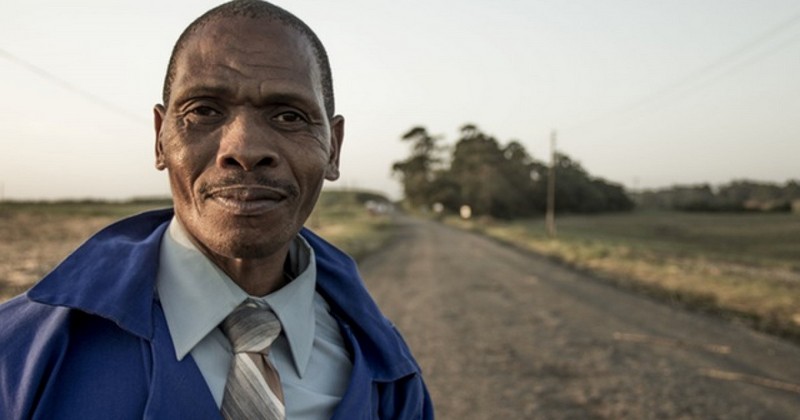Stereotypes, prejudice and discrimination: why should we avoid prejudging?

A look at these complex concepts from the perspective of psychology.
Nowadays it is common to hear the words stereotype, prejudice and discrimination in many social and professional contexts. This overuse of these three concepts can lead to errors and misunderstandings about what they really mean.
We must be aware that they are words that refer to important social realities and whose effects are the cause of Pain for thousands of people on the planet.
Stereotypes: what are they?
For the reasons given above, it is necessary to know the nature of these realities, it is necessary to know the nature of these realities from the definition provided by Psychology..
Definition and transcendence
Stereotypes are organized beliefs or ideas about the characteristics associated with different social groupsphysical appearance, interests, occupations, ethnicities, etc. These are simplified images of how groups are seen and what they do. The categories are made up of interpretations, ideas and opinions about the elements.
From psychology, these cognitions and interpretations about social groups are stereotypes. We all have stereotypes because our mind organizes concepts into categories, and they are not always negative; they must be understood as two sides of the same coin.
The dangers of generalizing
In short, stereotypes are widespread generalizations about members of a social group that lead to a tendency to emphasize similarities within the group, especially when the categorization has value or importance for the person making it and differences with other groups.
If we know a black and foreign woman, we are classifying her in the groups of woman, foreigner and black race, due to classify her within these categories, stereotypes arise towards them from the three groups and in case they are negative, a series of beliefs and ideas about them are created that surely do not correspond to reality.
The formation of stereotypes is usually of social origin through observational learning. This is the reason why the naturalness and spontaneity with which stereotypes are learned in our social behavior is frequent. In this case, it should be noted that we should be able to put reflection before the heuristic of generalizing to the heuristic of overgeneralizing, especially in the case where, more or less unconsciously, we have negative stereotypes towards a group of people. Broadening the focus and abstracting ourselves from the cultural baggage imposed by certain pre-established ideas can be key when looking at reality in a natural and non-stereotypical way.
Prejudices
Definition
Prejudices are the positive or negative feelings and emotions held about a social group and its members.. Affective evaluations depend on beliefs about the group. It is the affective component associated with categories, valuation. They are directly related to stereotypes, i.e., if a stereotype is negative, negative prejudice can be generated and if the stereotype is positive, positive prejudice can be generated.
Judging a priori
The basic difference is that prejudice is a kind of emotional evaluation, whereas stereotyping is a prior belief of a cognitive nature.. Generally speaking, prior ideas and beliefs give rise to evaluations that are already "biased" positively or negatively. Those who identify with Atlético de Madrid value more positively those who are members of the team, while Real Madrid members will be valued negatively from the outset. Prejudices and stereotypes are usually present at the same time without originating in distinct phases.
Discrimination
Definition and examples
Finally, discrimination differs from the previous ones in that it is behavior per se. It is defined as differentiated and observable behavior towards a social group or its members.. In the case of the example of the black woman we saw in the stereotypes, the people surrounding this woman, in addition to stereotypes, can develop prejudices and this can lead to discrimination, i.e., there will be a negative differentiated behavior or it may be positive for some others towards her person.
Analyzing prejudices, stereotypes and discrimination from the perspective of cognitive psychology
To identify stereotypes, prejudices and discrimination we must study someone who belongs to a certain social group, and who, because of being a member of this group, is discriminated against by another person who comes from a different group. To analyze them, it is necessary to first observe the discriminatory behavior and from this, infer both prejudices and stereotypes, since in this way, from the observable and objective we infer the emotional, which are the prejudices, and the cognitive, which are the stereotypes.
As we can see, these concepts are related but distinct and it is necessary to know the differences between them well.. Depending on the circumstances, they can be related or not, i.e., someone can develop stereotypes and prejudices but not discrimination, or only develop stereotypes but not prejudices or discrimination. In general, stereotypes give rise to prejudices that can lead to discrimination.
Translating the above into daily life
With these definitions in mind we can find out whether discrimination per se is occurring in our immediate environment. and more importantly, to perceive whether there are signs in the form of stereotypes, prejudices or both that may lead to discriminatory behavior.
It is in our hands to identify these situations and act to prevent them or, ultimately, to remedy them.
- I recommend reading: "10 reasons to stop judging others".
(Updated at Apr 14 / 2024)